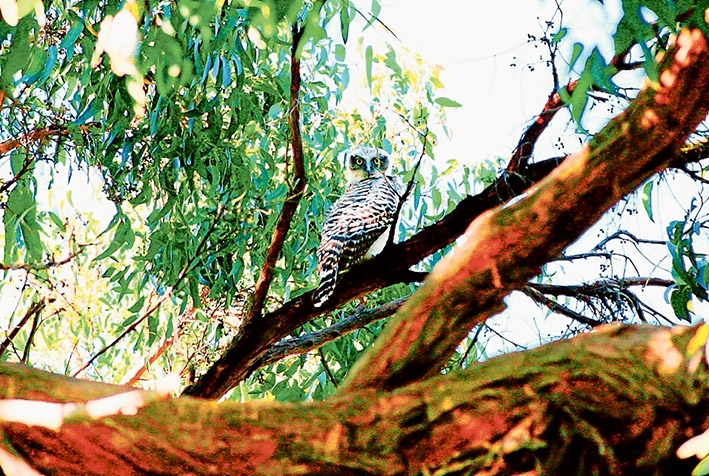
POWERFUL owls might be 60 centimetre s tall and have white plumage, but they are rarely seen; heard maybe, but not seen.
Being a nocturnal bird of prey they are most active at night and make themselves scarce during the day.
They are the largest of the avian night hunters and, as their name suggests, capable of preying on medium to large tree-dwelling mammals: ringtail possum and great glider. They also take roosting birds and animals on the ground, such as rabbits and small marsupials.
Despite their strength and hunting prowess, powerful owls are listed as being endangered.
The Mornington Peninsula has been identified as one area where several families do exist and Mornington Peninsula Shire and the local branch of Birdlife Australia are trying to find out where they live and roost.
The monitoring program could reveal habitat critical to their survival that needs protecting.
Adult powerful owls are dark brown with a white and brown flecked underside with yellow eyes. They can be heard calling at night and their voice is described as a “deep double hoot”.
This time of year, the young owls begin emerging from the nest and can be heard trilling to be fed just after dusk.
Shire conservation ranger Josh Gunn is asking for reports of sightings or observations of powerful owls so the locations can be included in future surveys and to broaden the knowledge of the species’ distribution on the peninsula.
Max Burrows of Birdlife Australia said the powerful owls are a “top level” predator that was necessary to balance the ecosystem.
“Recent surveys by the state government identified significant numbers of owls on the peninsula and we’re wanting to keep up to date with sightings and, in particular, breeding locations so they can be properly protected for the future generations of this endangered species,” he said.
Powerful owl sightings can be emailed to powerfulowl@mornpen.vic.gov.au or call 5950 1274.
For details about the powerful owl visit: www.birdsinbackyards.net/species/Ninox-strenua



